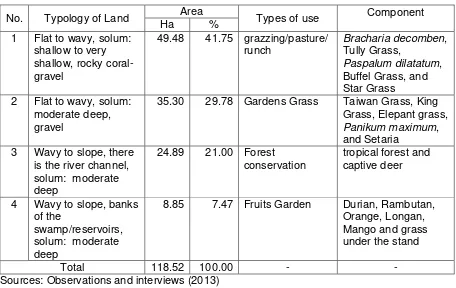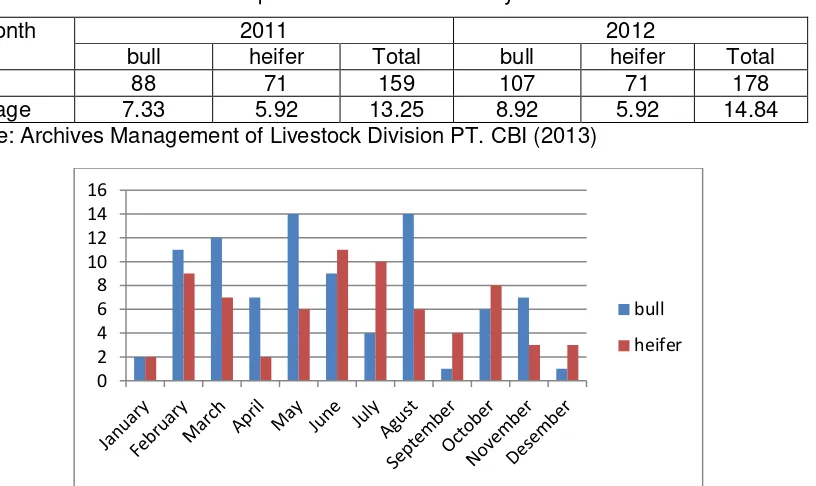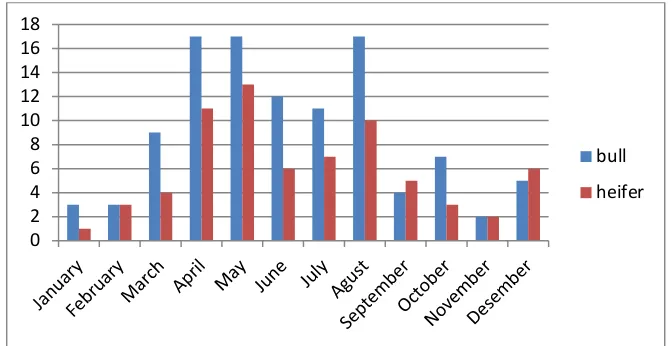AGROFORESTRY SYSTEM: AN EFFORT TO CRITICAL LAND REHABILITATION AT SULUNG AREA PT. CITRA BORNEO INDAH CENTRAL KALIMANTAN
By:
Abdul Rauf *1, Rahmawaty 2, Rimbun Situmorang3, and Dwi Hartanto3 1Department of Soil Science, Faculty of Agriculture, Sumatera Utara University
Email: a_rauf_soil@yahoo.co.id
2Department of Forestry, Faculty of Agriculture, Sumatera Utara University Email: rahmawaty1974@gmail.com
3PT. Citra Borneo Indah, Pangkalan Bun, Central Kalimantan, Indonesia
Summary: A land area of approximately 118.52 ha of PT. Citra Borneo Indah (CBI) located in Sulung Area, Arut Selatan, Kotawaringin Barat, Central Kalimantan Province is a very critical area with a thickness of 0-15 cm soil solum (very shallow), rocky, flat to wavy, and the expanse of impermeable layer in some places the surface. Land with this condition can not be cultivated for oil palm cultivation which is the main commodity of PT. CBI. In 2006, this critical area began empowered by the application of agroforestry systems based on cattle/forage grass, fruit trees, and forests. In Agroforestry systems can be classified into Agrosilvopastural type. Based on observations in February 2013 note that 49.48 ha (41.75%) of the degraded grazing land has become (grazzing/ pasture/runch) with the type of grass were Bracharia decomben, Tully Grass, Paspalum dilatatum, Buffel Grass, and Star Grass. On a land area of 35.30 ha (29.78%) is land with orchard grass for cut grass (species Taiwan Grass, King Grass, Elepant Grass, Panikum maximum and Setaria. Forest conservation and captive deer are in an area of 24.89 ha (21%). The remaining area of 8.85 ha (7.47%) in the form of land plant fruit trees (Durian, Rambutan, Orange, Longan, and Mango).
Keywords: Critical land, Agroforestry, Agrosilvopastural
INTRODUCTION
Currently, critical areas such as any form have become a resource that should be empowered to fulfill the necessities of life, food, clothing, shelter, and energy. Degraded land caused by land degradation and soil erosion resulting in lower layers of soil and even rock surface slopes to the steep hills were commonly cultivated, both with high agro technology (capital-intensive), and the simple Agro technology (Rauf, 2011). Cultivation on degraded lands can be done through several ways, namely: big hole, hole in hole, vertical mulch, ponds, rorak, swales, and terassering (Arsyad, 2000). Thus, critical land gradually increase the value of economic, social and environmental
Degraded land due to inundation, tidal land, wetlands, and other types of wetlands that had been abandoned, already reclaimed to agriculture, such as: surjan system, ponds, Silvofishery. Even for garden or recreation (water-based) such as: dams, fishing land, area of natural habitat for fish and birds and others. Likewise with critical land in the concession area of PT. Citra Borneo Indah (CBI) covering an area of approximately 118.52 acres located in Sulung Area, Arut Selatan, Kotawaringin Barat, Central Kalimantan Province, since 2006 has been developed for the application of agroforestry systems based on cattle/forage grass, fruit trees, and forests.
2
Land is very critical (0-15 cm soil solum thickness/very shallow), rocky, flat to wavy, and the expanse of impermeable layer in some places the surface is now used for the cultivation of forage grass crops in combination with fruits and forests as well as maintaining an integrated cattle. In Agroforestry systems can be classified into Agrosilvopastural type (Chundawat and Gautam, 1993; Michon et al.,1989). Hence, this study aimed to evaluate the extent of degraded land in the concession area of PT. Citra Borneo Indah (CBI) that can be empowered to agro-based economic activities with a major component of grass and cattle (type agrosilvopastural), plant / fruit trees and forest trees.
MATERIALS AND METHODS
Land rehabilitation studies based on agroforestry system was done in PT. Citra Borneo Indah (CBI) in March 2013. The study was conducted using descriptive methods, field surveys and interviews with managers of the farm division of PT. Citra Borneo Indah. Some of the activities that have been undertaken, namely: the collection of secondary data (related to cattle, fodder grass, cultivation, and distribution) and primary data (observation forage grass, fruit trees, forest trees, livestock, pasture, and soil conditions).
RESULTS AND DISCUSSION
Critical land in the concession area of PT. Citra Borneo Indah (CBI) with area of 118.52 hectares was distributed based on typology of various of land uses, as presented in Table 1.
Table 1: Types of critical land use in PT. Citra Borneo Indah (CBI) based on typology of land
No. Typology of Land Area Types of use Component
35.30 29.78 Gardens Grass Taiwan Grass, King Grass, Elepant grass,
and compost use of existing cowshed. Whereas the slightly more fertile land with moderate deep solum (35.3 ha) planted with non-grazing forage grass (Taiwan Grass, King Grass, Elepant grass, Panikum maximum, and Setaria). The critical areas with different types of use, can be used to sustain the increased of productivity and controlling land degradation (Table 1).
On the Wavy to slope with moderate deep solum, there is the river channel, land area of approximately 24.89 ha, in the upper reaches of the estimated prone to landslides and erosion as well as to secure the springs and river channel dedicated to forest conservation to the type of natural vegetation and tropical forests in one part is used for captive deer. While on the downstream with conditions Wavy to slope, banks of the swamp/reservoirs, moderate deep solum planted with fruit trees such as: Durian, Rambutan, Orange, Longan, Mango and grass under the stand. All fruit trees and forage grass that was cultivated fertilized using manure comes from cows raised cage by PT. CBI. Thus, critical land previously not utilized a resource that can provide economic benefits and the land can be rehabilitated which provide social and environmental benefits.
The births of cattle average per year for two years (2011-2012) is 168.5 (Table 2). This provides economic benefits. While the births of cattle per month in 2011 and 2012 in PT.Citra Borneo Indah presented in Figures 1 and 2.
Table 2: The total of cattle births per month in the last two years in PT.CBI
Month 2011 2012
bull heifer Total bull heifer Total
Total 88 71 159 107 71 178
Average 7.33 5.92 13.25 8.92 5.92 14.84
Source: Archives Management of Livestock Division PT. CBI (2013)
Figure 1: The births of cattle per month in 2011 in PT.Citra Borneo Indah
0 2 4 6 8 10 12 14 16
bull
4
Figure 2: The births of cattle per month in 2012 in PT. Citra Borneo Indah
Based on Table 2, it can be seen that the births of cattle average per month in 2011 is 13.25 and in 2012 increased to 14.84. in terms of the increasing of cattle, bulls are generally better than the heifer that is 1.24 times more in 2011 and 1.51 times more in 2012. The bulls will be more profitable because the price is more expensive than the heifer.
In terms of land management can be seen that there are linkages between the upstream region (in the form of forest conservation as a backup) and a water source and in the middle (in the form of pasture and grazing), while downstream of the form of cultivation of horticulture crops (fruits) that transect of land use these can be categorized into agroforestry systems with land distribution sequentially. In terms of its constituent components, agroforestry systems are categorized as Agrosilvopastural (the combination of agricultural commodities (in this case fruit trees) and trees (vegetation) of forest and pasture and livestock (cattle). This study is in agreement with Lal (1995) and Nair (1989).
CONCLUSIONS
Critical land in the concession area of PT. Citra Borneo Indah (CBI) rehabilitated by applying the concept of agroforestry with agrosilvopastural type. Of 118.52 hectares of critical land in the area PT.CBI, approximately 24.89 acres in the upper reaches are used for conservation and captive deer, the middle area of 60.19 hectares are used for pasture and forage grass cultivation, while in the downstream area of 8.85 hectares used for the cultivation of fruit trees.
ACKNOWLEDGEMENT
We are grateful to the Management of PT. Citra Borneo Indah (especially to Mr. Rimbun Situmorang, Mr. Budi Setiawan, Mr. Ramzi Sastra, and Mr. Dwi Hartanto for providing professional assistance and the University of Sumatera Utara (USU), Medan, Indonesia, for support this study.
REFERENCES
Rauf, A. (2011). Agroforestry systems; Measuring Empowerment Sustainable Land. USU Press. Medan.
Arsyad, S. (2000). Soil and Water Conservation. Cetakan ke 3. IPB Press, Bogor.
0 2 4 6 8 10 12 14 16 18
bull
Chundawat, B.S., and S.K. Gautam. (1993). Textbook of Agroforestry. Oxford & IBH Publishing Co. Pvt. Ltd., New Delhi.
Lal, R. (1995). Sustainable Management of Soil Resources in the Humid Tropics. United Nation University Press, Tokyo.
Michon, G., F. Mary., and J. Bompard. (1989). Multistoreyed Agroforestry Garden System in West Sumatra Indonesia, In. Agroforestry System in The Tropics. Edited by: P.K.R. Nair. Kluwer Academic Publishers, The Netherlands. p. 242-268.


